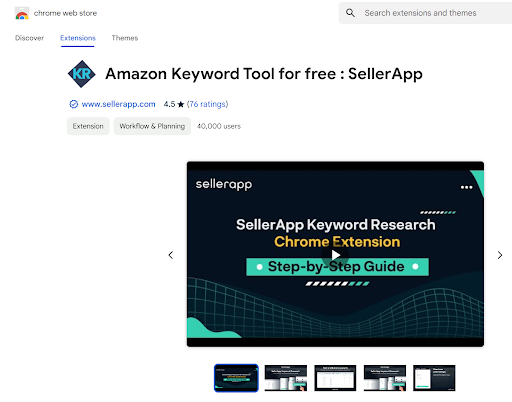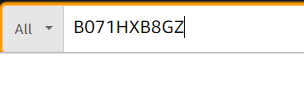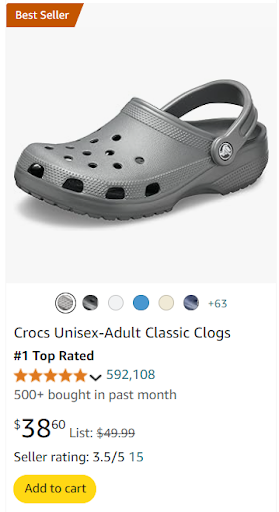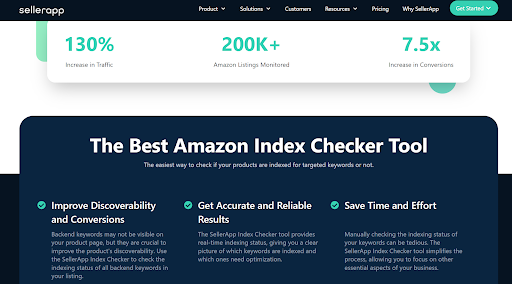Advanced Strategies to Find and Leverage Amazon Backend Keywords for 2024

When it comes to boosting visibility on Amazon, using the right keywords is crucial. Amazon’s A10 algorithm, similar to Google's search algorithm, prioritizes relevant search terms to rank products. However, simply adding visible keywords isn’t enough. Keyword stuffing your product titles and descriptions with too many words can make your listing look untrustworthy and cluttered. This is where Amazon backend keywords come into play. These hidden keywords are not visible to shoppers but are still indexed by Amazon's algorithm, helping you rank for multiple search terms without negatively impacting the readability of your listings.
In this guide, we will explore how you can discover high-converting backend keywords, integrate them effectively into your listings, and monitor their performance to ensure long-term success on Amazon.
How to Find the Right Amazon Backend Keywords
Finding the right backend keywords requires more than just guesswork. You need to conduct thorough research to discover terms that have high search volume, low competition, and relevance to your product.
1. Using Keyword Research Tools
Leverage powerful keyword research tools like SellerApp, Helium 10, or Jungle Scout to identify the best backend keywords. These tools provide insights into search volume, estimated monthly orders, and competition levels for specific keywords.
- SellerApp’s Keyword Tool: This tool provides a simple interface where you can enter a main keyword and generate hundreds of similar keywords. It also gives data on search volume, cost-per-click (CPC), and keyword relevance.

- Helium 10's Reverse ASIN Tool: Allows you to "spy" on competitors by entering their ASIN and uncovering the exact keywords they’re using, which you can incorporate into your own backend keyword strategy.
Click here for a video tutorial on how to use Helium 10’s reverse ASIN tool.
2. Amazon’s Auto-Complete Feature
A quick and easy way to find long-tail keywords is to leverage Amazon’s auto-complete feature. When you begin typing a keyword into the Amazon search bar, you’ll notice suggested searches appearing. These suggestions are real searches that buyers frequently use.

Steps:
-
Open Amazon and start typing your primary keyword.
-
Record the suggested auto-complete terms.
-
Use these long-tail keywords as backend search terms to target more specific audiences.
3. Analyzing Competitor Listings and Customer Reviews
Your competitors' listings and customer reviews can be a goldmine for hidden keywords. Look at how buyers describe the product in reviews and use those phrases to populate your backend keywords.
-
Review Mining: Scan customer reviews for recurring terms and phrases that customers use to describe the product. Chances are, they’re using the same terms when searching for the product.
-
Competitor Analysis: Review competitor listings to identify the keywords they’re ranking for, and add variations of those terms to your backend list.
How to Add Backend Search Terms on Amazon
Once you've gathered your backend keywords, it’s time to add them to your product listings.
Steps:
-
Open your Amazon seller central account.
-
Check the ‘Inventory’ menu, click on ‘Manage Inventory’.
-
Find the listing where you want to add backend keywords. Click the ‘Edit’ button next to that listing.
-
Click the ‘Keywords’ option that comes under ‘Product Details’.
-
Enter your backend keyword in the ‘Generic Keyword’ field and click ‘Save’.
Best Practices for Optimizing Amazon Backend Keywords
You’re not quite done with the above steps, ensure the below limits are adhered to while optimizing your listing.
1. Stay Within the 250-Byte Limit
When entering your search terms, you should be making a note of the difference between characters and bytes. Most alphabetic and number characters use a byte-for example, a-z or 0-9. Some special characters can run as high as 4 bytes. For this reason, to conserve space where available, avoid using unnecessary special characters in a manner that reduces them.
-
Avoid punctuation; simply separate words with spaces.
-
Use singular or plural forms—there’s no need to add both.
-
Don’t include common stop words like “and,” “the,” or “of.”
2. Don’t Repeat Front-End Keywords
Avoid repeating keywords that are already used in your product title, bullet points, or description. Repetition will not improve your ranking and will just waste valuable space in the backend keywords section.
3. Include Synonyms, Abbreviations, and Misspellings
To ensure you capture a wider range of searches, include:
-
Synonyms (e.g., “running shoes” and “jogging sneakers”).
-
Common misspellings (e.g., “runnning shoes”).
-
Abbreviations (e.g., “USB” for “Universal Serial Bus”).
4. Use Long-Tail Keywords for Niche Targeting
Long-tail keywords (e.g., "best waterproof running shoes") are more specific and often face less competition, making it easier for your product to rank higher in search results.
5. Regularly Update Your Backend Keywords
Amazon’s algorithm evolves, and so does customer behavior. Regularly review your keyword performance and update your backend keywords to stay ahead of changing trends and competitors.
How to Check If Your Backend Keywords Are Indexed
Not all backend keywords will be indexed by Amazon’s algorithm. Here are two methods to check if your keywords are indexed:
Method 1: Manual Amazon Search
-
Copy your product’s ASIN.
-
Enter the ASIN into Amazon’s search bar followed by the backend keyword you want to check.
-
If your product appears in the search results, the keyword is indexed.


Method 2: Use a Keyword Indexing Tool

Tools like SellerApp’s Index Checker or Helium 10 allow you to check if your backend keywords are being indexed in bulk, saving you time and effort.
Amazon Backend Keywords: Dos and Don’ts
Do:
-
Use synonyms, spelling variations, and abbreviations to cover more search possibilities.
-
Enter keywords in a logical order to enhance discoverability (e.g., “best waterproof running shoes” instead of “shoes running waterproof”).
-
Monitor keyword performance using tools and adjust accordingly.
Don’t:
-
Exceed the 250-byte limit. If you go over the limit, none of your keywords will be indexed.
-
Use keywords already included in your product’s title, bullet points, or description.
-
Include brand names (yours or competitors’), ASINs, or misleading keywords.
Final Thoughts
Optimizing your backend keywords is a critical step in boosting your Amazon SEO and increasing product visibility. By carefully selecting relevant keywords, keeping your backend keyword list up to date, and regularly checking for indexing, you can gain an edge over the competition and drive more traffic to your listings.
Remember, finding the right backend keywords is an ongoing process. Regular A/B testing and keyword updates are key to staying competitive in Amazon’s ever-evolving marketplace.
If you need personalized guidance or help fine-tuning your strategies, Superfuel AI can assist. Our AI-powered assistant analyzes 36+ key Amazon metrics to identify and address the root causes of sales fluctuations, helping you optimize your storefront and boost sales. Reach out to us at [email protected].
--
Ben Mathew, Amazon Expert
Ben Mathew is a co-founder at Superfuel, a sales assistant for Amazon sellers. In the past, Ben and his team of e-commerce specialists and software engineers have launched 40+ new brands on Amazon, taking them from zero to bestsellers. In his free time, he is either learning from other top sellers or encouraging his 3 daughters in their love for reading. He is reachable at ben [at] superfuel.io.